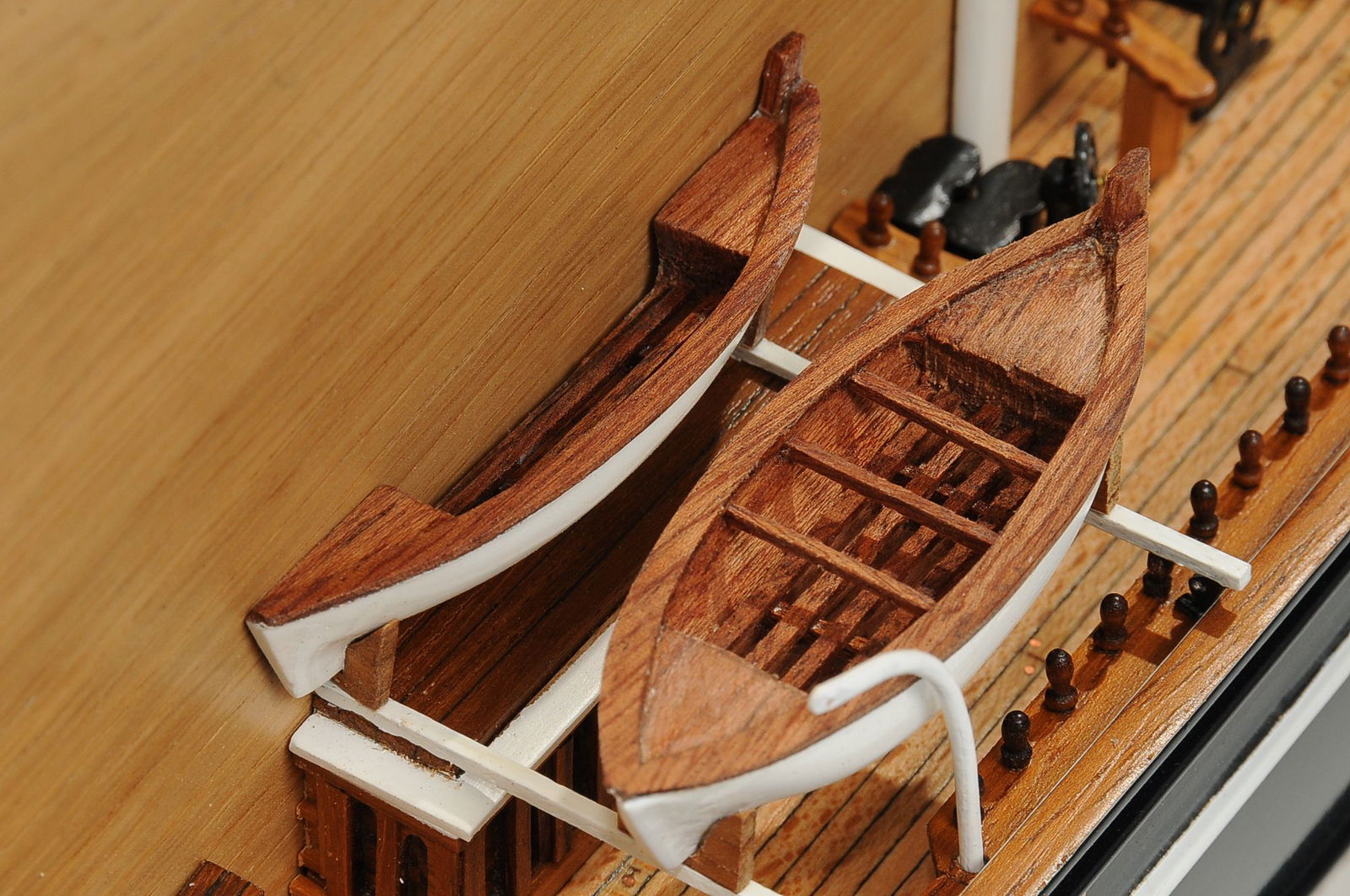Half Model Cutty Sark (Superior Range) – PSM
SKU: PSM129
Kindly be aware that this model is custom-crafted for you and begins production upon order. Production time will be confirmed after the order is placed with us to ensure accurate scheduling and quality. If this item is currently in stock, it will be clearly stated on the product page.
Please note: If a flag is shown in the images, it is not included by default and would incur an additional cost. If you would like a flag added, please contact us after your purchase to arrange this.
£2,496
Description
Handcrafted, scratch built and ready half model of the Cutty Sark Model Ship
Among the most famous old sailing ships still extant, Cutty Sark was one of the last clippers built for the China tea trade. Ordered by Captain John Willis of London, her hull was of composite construction, with teak planking on iron frames. Cutty Sarks name is short Scottish for short shirt and comes from the Robert Burns poem Tam OShanter. The reason for his choice of name is not known.
Willis insistence that only the finest materials be used in the construction of the Cutty Sark resulted in the bankruptcy of her original builders. Denny Brothers, who took over their yard, then oversaw her completion. Even though she lost one of her most dramatic encounters with her main rival, Thermopylae, she still acquired the admiration of London, for the persistence of her crew. She completed a 16,000-mile journey in one hundred and nineteen days, by no means an illustrious feat; the admiration was the inventiveness of her crew in building makeshift rudders twice, as she had lost her rudder in severe gales.
The advent of the steamships and the opening of the Suez Canal meant that clippers were no longer economic, and by 1878, clippers were out of the tea trade. A number of unfortunate accidents happened on board the ship between 1878 and 1883. These included a murder and one of her Captains (Captain Wallace) going mad and jumping overboard. In 1883 however, things were about to change for the clipper ship. She did the return journey from England to Australia (under Captain W. Moore) with a cargo of wool through the Cape of Good Hope in seventy-nine days. As with the tea trade, speed was also a critical factor for the wool trade.
Richard Woodget, who became Cutty Sarks most celebrated master, succeeded Moore. Her best run was in 1888, where she did the journey in sixty-nine days, shaving an amazing ten days off her previous record. She completed her last journey to Australia in 1895, and was sold to J. A. Ferreira of Lisbon. Four years later, she was again sold to the Cia de Navegacao de Portugal and was renamed Maria di Amparo. In 1922, she was in Falmouth, when Captain Wilfred Dowman spotted her. Later that year, he purchased the ship at his own expense and brought her back to England and re-named her by her famous name. She was restored for use as a full-rigged training ship at Falmouth.
When Dowman died in 1936, his widow donated the ship to the Thames Nautical Training College. In 1952, the Cutty Sark Preservation Society came together under the auspices of Frank Carr, Director of the National Maritime Museum. Finally in 1954, she was opened as a museum at Greenwich. Two years after the ship opened to the public, Cutty Sark began her sponsorship of tall-ship races of the International Sail Training Association.
We do many different types of half models. The list includes Australia II, Atlantic, Blue Nose, Defender, Endeavour, Shamrock, America and Vigilan etc. As you can see from the pictures, you can specify the colour of the base and whether you would like a matt or glossy finish.
Please browse our website or Contact Us for any more information in finding the perfect miniature model for you.
Additional information
| Weight | 18 kg |
|---|---|
| Size | |
| Personalise your name plate |
Related Products
Customer Reviews
Information


My account
Legal


Follow Us
Follow us to keep up-to-date using our social networks

Copyright © 2025. Premier Ship Models. All Rights Reserved.




















